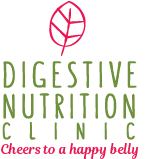Do You Have Any Symptoms Soon after Consuming Milk or Dairy Products?
Being lactose intolerant means your body is unable to digest lactose, a type of sugar primarily found in milk and dairy products. This means that your body has a shortage or a deficiency of an enzyme called lactase.
Lactase is needed for the breakdown of lactose into two simple forms of sugar—glucose and galactose—which can be easily absorbed into the bloodstream.
Following the consumption of lactose, individuals with lactose intolerance may experience flatulence, diarrhea, a bloated stomach, stomach cramps, pains and nausea. These symptoms typically start to develop 30 minutes to 2 hours after the lactose was consumed.
There Are Three Types Of Lactose Intolerance:
Primary Lactose Intolerance
This is the most common type of lactose intolerance. As people age, their bodies produce less lactase enzyme and symptoms start to develop. Usually, this occurs after the age of two, although the symptoms are only noticeable in adulthood.
This type of lactose intolerance is caused by an inherited genetic mutation that runs in the family. It affects 65% of the human population, being most common in East Asia, where it affects more than 90 percent of the adult population, and among people of West African, Arab, Jewish, Greek, and Italian descent. Furthermore, lactose intolerance has the lowest prevalence in populations with a long history of dependence on milk products as an important food source.
Secondary Lactose Intolerance
This type of lactose intolerance occurs when your small intestine decreases lactase production after an illness, injury or surgery involving your small intestine. It can occur at any age.
Possible causes are gastroenteritis, inflammatory bowel disease, celiac disease, chemotherapy or the long-term use of antibiotics. It can be only temporary but may become permanent if its cause is a long-term condition. This condition can also occur as people age and the body’s ability to produce lactase decreases.
Congenital or Developmental Lactose Intolerance
This condition is a rare genetic disorder in which little or no lactase is made from birth.
Intolerance vs. Allergy
Milk allergy should not be confused with lactose intolerance.
Milk allergy can be potentially life threatening as it involves the overreaction of the immune system to a specific food protein. When there is a consumption of the specific food protein, the body can trigger an allergic reaction.
Symptoms can vary from mild (rashes, hives, itching, swelling, etc.,) to severe (trouble breathing, wheezing, loss of consciousness, etc.)
Ways to Manage Lactose Intolerance
The symptoms’ severity depends on the individual as people have different levels of tolerance. Some people may be able to tolerate small amounts of lactose without triggering any symptoms, while others may not even be able to have a small amount. Finding the amount of lactose in milk products and how much can be tolerated requires some trial and error.
• Choose reduced-lactose milk and milk products;
• Avoid consuming milk on an empty stomach;
• Consume dairy options with less lactose, and;
• Use over-the-counter pills or drops that contain lactase enzyme.
Common foods with lactose are milk, creams, ice creams, yogurt, soft cheeses and butter. Lactose may also be added to some canned, frozen, boxed and other prepared foods.
Keep in mind that the US Food & Drug Administration (FDA) does not regulate the term ‘lactose free’ or ‘lactose-reduced.’ These labels can have different meanings and a lactose-reduced product may still contain lactose that could cause symptoms.
Make sure to check the ingredient label. Look for these words that indicate that the product probably contains lactose: Milk, Cream, Butter, Milk Solids, Margarine, Cheese, Whey and Curds.
Watch out for ‘non-dairy’ foods that contain sodium caseinate, which can be expressed as ‘caseinate’ or ‘milk derivative’ on the label and may contain low levels of lactose.
Lactose Content of Food

References
USDA Nutrient Database, Nutribase 17 Nutritional Software, Manufacture Data, Dietitians of Canada (Food Sources of Lactose)
NHS -Lactose Intolerance
Mayo Clinic -Lactose Intolerance
NIDDK -Lactose Intolerance
NIH -Lactose Intolerance





